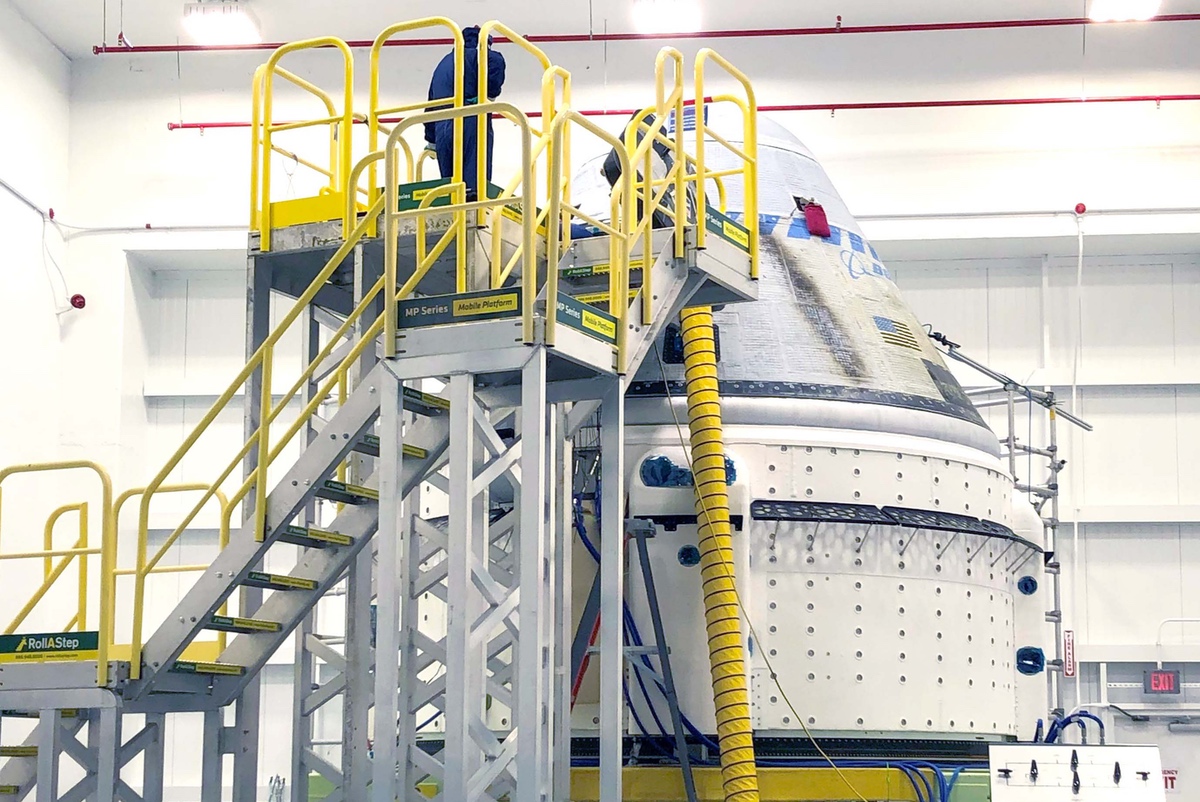
WASHINGTON — NASA and Boeing have pushed back the first crewed launch of the company’s CST-100 Starliner spacecraft with astronauts on board until at least late July because of certification paperwork that has taken longer than expected to complete.
In a call with reporters March 29, officials said they had rescheduled the Crew Flight Test (CFT) mission to no earlier than July 21. The announcement came six days after NASA said that CFT would not take place by the end of April, as previously scheduled, but offered few details why.
Steve Stich, NASA commercial crew program manager, said most of the work needed to prepare the CFT mission for launch to the International Space Station will be done by April. An exception, he said, is certification work on the capsule’s parachutes. “There’s no issues or concerns with the parachute system,” he said. “It’s just a matter of going through all that data and looking at the data and making sure we’re ready to go fly safely.”
The parachutes are installed on the spacecraft, but Stich said one more ground test is planned of an element of the parachute system, a parachute that removes the cover on the top of the spacecraft to expose the rest of the parachute deployment system. That test is designed to confirm that it can operate as planned in what he described as the “highest possible regime” during an abort.
Mark Nappi, vice president and program manager for Starliner at Boeing, said the delay in that parachute certification work was the fault of both the company and NASA. “It took longer for us to get the product over to NASA, and it’s taken a little bit longer for NASA to review it with us,” he said.
Officials did not discuss any potential issues with certification paperwork during a Feb. 17 briefing, when they expressed confidence in launching CFT by the end of April. Stich said at the time that they have completed 80% of the preparations for the mission and neither he nor Nappi raised issues like the certification work as a challenge to that schedule.
“Perhaps we were a little optimistic on those reviews of those products in setting the April timeframe,” Stich said. “We knew that April was a good time to go fly” given the schedule of other crew and cargo missions to the station.
When it became clear they would not be ready for an April launch, NASA and Boeing considered options for a May launch, but concluded it did not work well. A SpaceX cargo Dragon mission is scheduled to launch to the station in June, occupying the docking port Starliner would use. “We came to the conclusion that the July window would be best,” he said.
That revised schedule will also allow engineers more time to check out avionics systems on the vehicle after finding a logic error in a “black box” unit called an integrated propulsion controller. “We want to make sure that condition doesn’t exist anywhere else,” Nappi said.
The extra testing will make sure “we’ve really wrung out the system for crewed flight,” Stich said. “We want to go look at the whole system to make sure we’re ready to go fly.”
The July 21 date is not finalized and will depend on working out a range conflict with a U.S. Space Force mission also planned to launch around that time on another Atlas 5. “We’ll have to go work with the Space Force and ULA to see the readiness of our vehicle and the readiness of their vehicle and whether we get that slot,” Stich said. He did not identify the conflicting mission, but a classified mission designated USSF-51 is scheduled to launch as soon as June according to current manifests.
Soyuz update
The Starliner briefing took place a day after the Soyuz MS-22 spacecraft, which suffered a coolant leak in December, undocked from the station without a crew and landed in Kazakhstan. Immediately after the landing there were reports that temperatures in the capsule rose to 50 degrees Celsius, which would have endangered the health of anyone on board.
Joel Montalbano, NASA ISS program manager, said he had heard those reports, but they did not match up with other data from the spacecraft. “We have a number of questions open with our Russian colleagues to better understand that,” he said. He declined to say what temperatures he had heard the capsule experienced.
He estimated it would take two to three weeks to review the data from the Soyuz return, working with Roscosmos. “There’s so many questions on this that trying to speculate isn’t going to help anything.”
Once engineers understand what happened with Soyuz MS-22, he said, “that’s when we’ll decide as a joint team, between NASA and Roscosmos to return crew members.” He added the Soyuz MS-23, launched without a crew in February to replace Soyuz MS-22, is working normally.
Montalbano said that the current schedule calls for Soyuz MS-23 to return Russian cosmonauts Sergey Prokopyev and Dmitri Petelin and American astronaut Frank Rubio to Earth on Sept. 27. If that schedule holds, the three will have spent 371 days in space on their mission, which for Rubio will set a record for longest single spaceflight by an American astronaut.
Related
Article From & Read More ( Starliner crewed test flight delayed to July - SpaceNews )https://ift.tt/fxy8DUO
Science
No comments:
Post a Comment